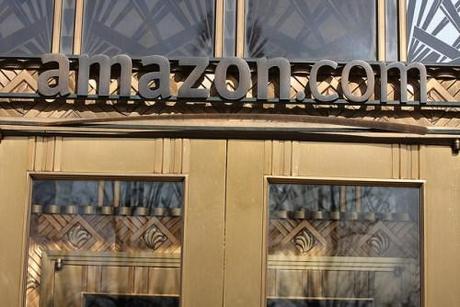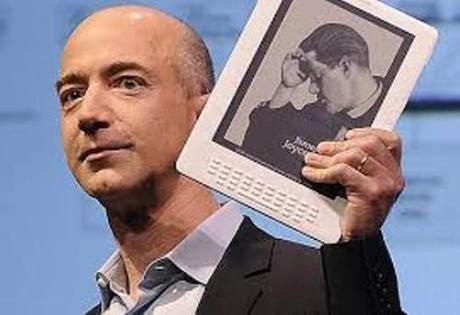
Amazon is adding a new weapon to its arsenal that could help the online giant increase its dominance in the ebook and e-publishing market. It’s running a beta test on a cover-art generator that allows self-published writers using the Kindle Direct Publishing platform to design their own ebook covers. You can use the KDP Cover Creator to make a cover using your own image or select one from a gallery of royalty-free stock photos provided by Amazon. They are customizable with a variety of different font sets, colour schemes and text layouts. You can also make changes to your text and images, or replace the cover.
Amazon doesn’t say whether or not non-US KDP users have access to the KDP Cover Creator as yet, although word on the ground is that, for now, it’s only available to U.S. users.
As to whether not an author can use the same KDP-generated cover for other editions of the book sold through Smashwords, Kobo Books, Barnes & Noble and other digital platforms, is not clear. Some writers are also concerned about whether they will run into problems if they decide to use the same KDP-generated cover design to publish a print version of their book through other online booksellers like Lulu, Wordclay, CompletelyNovel.com or even Createspace.
In the wake of Amazon’s KDP Cover Creator disclosure came news that the company had coughed up $150 million to buy Goodreads.
Goodreads touts itself as “the world’s largest site for readers and book recommendations.” They added: “With the reach and resources of Amazon, Goodreads can introduce more readers to our vibrant community of book lovers.” They said they’re “looking forward to bringing Goodreads to the most popular e-reader in the world, Kindle, and further reinventing what reading can be.”
Goodreads claims that its app for Facebook is now “the number one book—related app on Facebook” and more than 2.5 million of users are using it. “In the last four weeks alone, we shared more than 20 million books on Facebook,” boasted Goodreads.
The Washington Post cites estimates by book industry researchers at Codex Group showing that that 11 percent of book buyers in the USA make about 46 percent of recommendations.
“The sorts of lit lovers who like to evangelize their favorite new novel are the same sorts of folks who tend to show up on Goodreads. And so, perhaps unsurprisingly, the site is a great platform for convincing people to buy books,” the Washington Post added.
No doubt all this is music to Amazon’s ears and all indications are it’s part of a calculated strategy to dig its heels in further and make its position in the book market virtually insurmountable.

Amazon CEO and founder, Jeff Bezoz
Amazon CEO and founder, Jeff Bezoz told investors during the announcement of financial results for the company’s fourth quarter ended December 31, 2012, that e-books are a multi-billion category for Amazon and sales grew at approximately 70% year-on-year 2012.
“We’re now seeing the transition we’ve been expecting,” said Bezos. “After 5 years, eBooks is a multi-billion dollar category for us and growing fast – up approximately 70% last year. In contrast, our physical book sales experienced the lowest December growth rate in our 17 years as a book seller, up just 5%. We’re excited and very grateful to our customers for their response to Kindle and our ever expanding ecosystem and selection,” said Bezos.
The company also disclosed that at year-end, Kindle Fire HD, Kindle Fire, Kindle Paperwhite and Kindle held the top four spots on the Amazon worldwide bestseller charts since launch.
In recent months Amazon launched Kindle Stores for Brazil, Canada, China, and Japan, reportedly with “a large selection of the most popular books, including thousands of local-language books.” Amazon is estimated to control 45 percent of the e-book market.
Morgan Stanley’s Scott Devitt, a leading Internet and e-commerce analyst, recently told investors that he estimated worldwide e-book unit sales of 859 million in 2012, up from a previous estimate of 567 million. He believes that Amazon likely sold 383 million e-books last year, compared with an earlier estimate of 252 million.
According to Reuters, Amazon’s broader strategy is to sell mobile gadgets at or near cost and ultimately generate profits when consumers use the devices to buy digital content, including e-books, apps, videos, music and games.
Moreover, one analyst noted, “Amazon can solidify its presence in the ebook business through a secondary market for digital items and launching interactive ebooks.”
Forrestor Research estimates that the U.S. ebook market will reach $13.6 billion by 2017.
